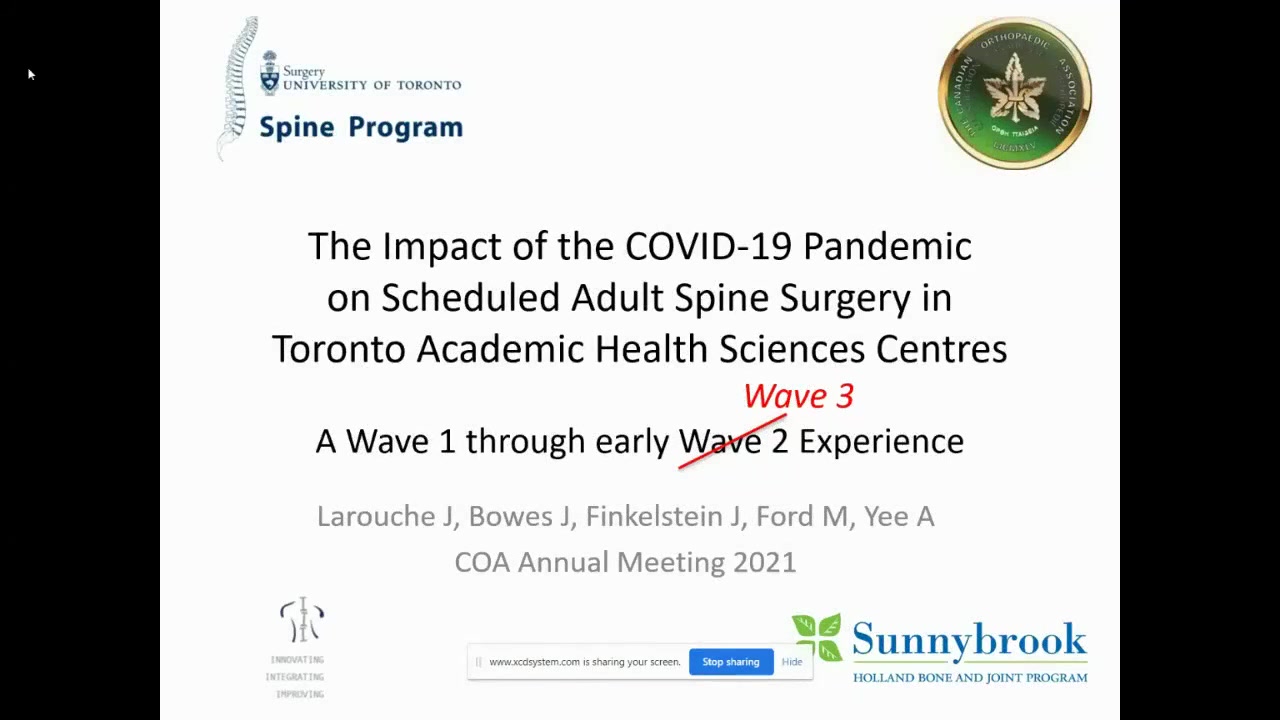Please login to view this media

- Talk
- 15/09/2021
- Canada
The Impact of the COVID-19 Pandemic on Scheduled Adult Spine Surgery in Toronto Academic Health Sciences Centres (AHSC): A Wave 1 Through Early Wave 2 Experience
Description
The presentation, led by Albert Yee, provides an update on the effects of the COVID-19 pandemic on scheduled surgical activities in Toronto, specifically focusing on adult spine surgery and various orthopedic specialties, including pediatrics. The report quantifies deferred surgical activity and the resulting backlog of procedures using administrative data.
Yee notes that Ontario's directive number two allowed for the redeployment of staff and suspension of surgeries as part of the pandemic response, leading to a significant decline in surgical activities. Graphs illustrate a sharp drop in surgical procedures during the pandemic, with an initial surge before directive implementation followed by a dramatic reduction to below typical levels.
Data reveals a surge in the burden of COVID patients, correlating with waves of the pandemic, which significantly impacted surgical capacity. While spine surgeries have shown some recovery post-wave one, overall orthopedic surgical volumes decreased by 22% to 36%. The backlog reached approximately 1,100 procedures at Sunnybrook after wave one, with continued strain observed through fiscal year 2021.
Interestingly, in hip and knee surgeries, a negative backlog was noted, suggesting fewer patients were added to the waitlist due to reduced referrals amid the pandemic. This shift was observed alongside a transition to virtual care options, which were swiftly implemented to supplement in-person visits.
Despite efforts to address the backlog with additional funding and surgical volume incentives, the ongoing impact of the pandemic has resulted in longer wait times and reduced clinic visitations. In summary, the substantial decrease in scheduled surgical activities across both adult and pediatric populations has created a significant backlog, emphasizing the need for proactive planning and targeted funding for orthopedic surgery.